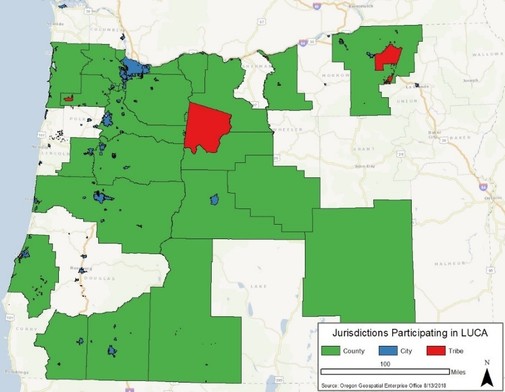|
News from DAS | September 2018

Director's message
Katy Coba, State COO and DAS Director
People who take time to learn about DAS’
unique role in state government are often surprised by the scope of our services. I
learned this firsthand when I became the DAS Director in late 2016, even after
30 years in state government!
This edition of our newsletter reflects DAS’ diverse
functions, and I could not be prouder of the work we do. Yet we rarely work
alone. Partnerships and collaboration are two of our values. It is through the mutual
efforts of our many agency partners and other stakeholders that we ultimately
succeed.
I hope you enjoy learning about DAS in the articles
below, and please reach out to us if you’d like to know more.
-Katy
|

Collaborative project improves debt collection
This June, the DAS Financial Business Systems team successfully implemented a process in the Statewide Financial Management Application (SFMA) to help vendors who owe the state money with paying down their debt.

Shortly
after Governor Brown issued an executive order on Promoting Fiscal Responsibility by Recovering Monies Owed to the State, a project team from the departments of Transportation, Revenue and DAS collaborated to define a process whereby payments to
vendors who owe the state money are intercepted and applied to their outstanding debt. This process uses existing state resources and technology platforms. Over the past
year, project team members worked diligently to modify existing technology
to transition the process into production.
ODOT
piloted the process in
February 2018. Within the first seven months, ODOT intercepted payments totaling
$113,000 to apply towards debts owed by the respective vendors; in the
first three months following SFMA implementation, SFMA agencies intercepted
payments totaling $226,000.
The project team
continues to evaluate the process for enhancements, leveraging debt
collection efforts in the state. For more information, please contact Stacey
Chase, 503-947-8567, Stacey.A.Chase@oregon.gov.
|

An accurate
census is a top priority for Oregon. Earlier this year Governor Brown appointed
Cy Smith, State Geospatial Information Officer, to act as the official liaison
for the statewide evaluation of the census address database. This evaluation,
called the Local
Update of Census Addresses (LUCA), is an important foundation for
ensuring a complete, accurate count in the 2020
Census. This is the first time the U.S. Census Bureau authorized
states to participate in LUCA, which starts several years before the census is
actually conducted.
LUCA provides
the sole opportunity for local and state governments to provide input to
improve the addressing information the Bureau will use to canvas for the 2020
decennial census. Participation requires significant time and resources. For
this reason, only 127 of Oregon’s 287 public bodies were able to participate in
the LUCA program. But because the state was allowed to participate, the
Geospatial Enterprise Office in the Office of the State Chief Information
Officer was able to evaluate census addresses in all jurisdictions, including the ones that were not able to
participate directly. This was particularly helpful in ensuring the Bureau has
a complete list of addresses to use for the 2020 Census in Oregon.
 |
The state’s
primary objective was to add verifiable addresses that were missing from the
Bureau’s database. While GEO found the Bureau’s data to be relatively accurate,
they were still able to add 81,600 residential addresses for the entire state. This
equates to a total estimated value of federal funds for Oregon of $408 million
per year, or $4.08 billion over the decennial period of the census. All of
these additions represent residents of Oregon who could potentially have been
overlooked in the 2020 Census.
For more information, contact Cy Smith, 503-378-6066, Cy.Smith@oregon.gov.

DAS, other agencies move forward on
Executive Order 17-20
In 2017, Governor Brown signed a comprehensive executive
order to accelerate energy efficiency in buildings and reduce greenhouse gas
emissions. Since then, several agencies, including DAS, have formed the Built
Environment Efficiency Working Group (BEEWG) to implement the order.
While a large part of it addresses commercial and
residential building codes, the order also targets energy efficiency in state
buildings. DAS has already responded by adopting a new energy policy
that sets a five-year goal for meeting energy use intensity (EUI) targets in
its buildings.
DAS receives a $170,000 rebate check from Energy Trust of
Oregon for its energy efficiency project at the Archives building.
DAS, in collaboration with the Oregon Department of Energy, is
also working on developing an enterprise-wide strategy for managing energy use
from “plug loads” – computers, appliances, smartphones and other devices
consuming an increasing share of electricity. Finally, DAS, ODOE and DEQ are
working on new energy and water efficiency standards for state equipment
procurement.
You can follow the BEEWG’s progress, or submit your
questions and comments on its website.


During its August meeting, the Workday Project’s steering
committee determined Workday’s go-live
date must be adjusted. DAS Director and
COO Katy Coba subsequently sent a message to all agency directors, which you
can read, along with more details about the shift, in the August Workday
Project newsletter.
The go-live date shift does not imply the project is
experiencing downtime. On the contrary,
this shift is providing opportunities to ensure everything about the upcoming
implementation will go as smoothly as possible. The Workday Project continues
to support agency Change
Network members as they facilitate Workday previews within their
agencies, including sessions for large groups to view the system together and
for lab environments where employees can gain hands-on experience.
The team is also developing toolkits
to allow small groups of agency users to experience scenarios reflecting key
processes within Workday.
Additionally, the shift provides agencies more time to: test
their data continuity extracts (read the May
2018 newsletter for more information); refine their supervisory
organization (“org chart”) data, as well as determine the security role
assignments for employees who will have special roles within Workday (ex: HR
Partner); improve knowledge and awareness of Workday within their agencies;
align their business processes with Workday; and
familiarize themselves with Workday security roles. By taking advantage of this
extra time, agencies will be better prepared for implementation.
Please send any general questions you may have about the
project to chro.workday@oregon.gov.
Please contact either your Agency
Readiness Contact or Change
Leader for more information about your agency’s Workday efforts.


The Charitable Fund Drive is every state employee’s
opportunity to “Give dollars. Make change.” It’s a chance to make a
budget-friendly charitable donation using the ease of payroll
contribution, which can make positive change in Oregon.
Employees are encouraged to find a nonprofit
doing work they care about (there are over 750 to choose from) and make a pledge
today at ecfd.oregon.gov.
For help
pledging, or for questions about the Fund Drive, email oregoncfd@earthshare-oregon.org, call 503-223-9015, or reach out to the appropriate agency's Fund Drive Coordinator.
|
|